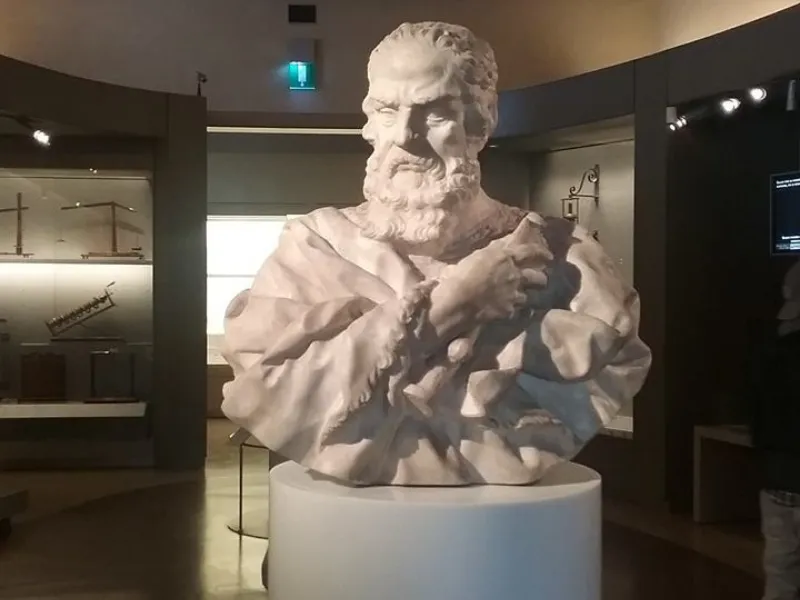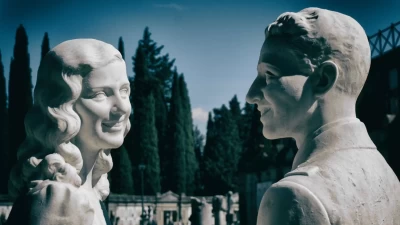The stone of the outrage
The stone of the outrage
A marble stone situated in the centre of the "Mercato Nuovo" in Florence marks the place where the "Carroccio" stayed during Middle Ages. The "Carroccio" was the charriot of the Florentine republic decorated with the colors of the city hall and with the Florentine lily; it followed Florentine army during his movements and troops protected it. When the flag of the city fell down because the enemies won the battle, it was a real defeat for Florence. For this reason the stone has the shape of a green and white wheel!
During the XV century failed merchants were punished here and they suffered a terrible public injury. They couldn't move because their hands were Tied, their trousers fell down and their bottom hit three times on the stone. A Florentine saying goes: "Essere con il culo a terra" (that means go bankrupt) or "avere sculo" (to be unlucky). They both refer to this event!
Remember that Middle class composed by merchants was associated in different guilds in the XIV century: seven Major guilds (Merchants textile, wool manufacturers, silk, judges and notaries, bankers, furriers, merchants of spices and dyes) and fourteen Minor guilds. From 1282 priors were representatives of the seven Major guilds: they fighted against the old aristocratic families revenging an active role of trade in Florence. They had a lot of success, in fact the trade of wool and the guild of bankers were at the base of the development of Florentine economy!
During the XV century failed merchants were punished here and they suffered a terrible public injury. They couldn't move because their hands were Tied, their trousers fell down and their bottom hit three times on the stone. A Florentine saying goes: "Essere con il culo a terra" (that means go bankrupt) or "avere sculo" (to be unlucky). They both refer to this event!
Remember that Middle class composed by merchants was associated in different guilds in the XIV century: seven Major guilds (Merchants textile, wool manufacturers, silk, judges and notaries, bankers, furriers, merchants of spices and dyes) and fourteen Minor guilds. From 1282 priors were representatives of the seven Major guilds: they fighted against the old aristocratic families revenging an active role of trade in Florence. They had a lot of success, in fact the trade of wool and the guild of bankers were at the base of the development of Florentine economy!

The stone where merchants were punished and the statue of MIchele di Lando the leader of one of the lower classes who worked for the guild of wool.
He encoraged the insurrection of these people in 1378 besieging together the priors palace to safeguard their rights.
Altri articoli

Galileo Galilei kneels in front of the church
In 1632 the scientist published his "Discorso sui massimi sistemi" and he risked to be burnt at the stake

Michelangelo and the secret room.
The artist drew even his self-portrait depicting the attitude of an imprisoned man.

Mary and Mario
The Porte Sante Cemetery, a final rest for many, symbolizes love, loss, and the eternal beauty of Florence through its storied inhabitants.

Pietramala and Its Legend
This tale symbolizes the eternal struggle between good and evil, with San Zenobio prevailing through both strength and wit.

